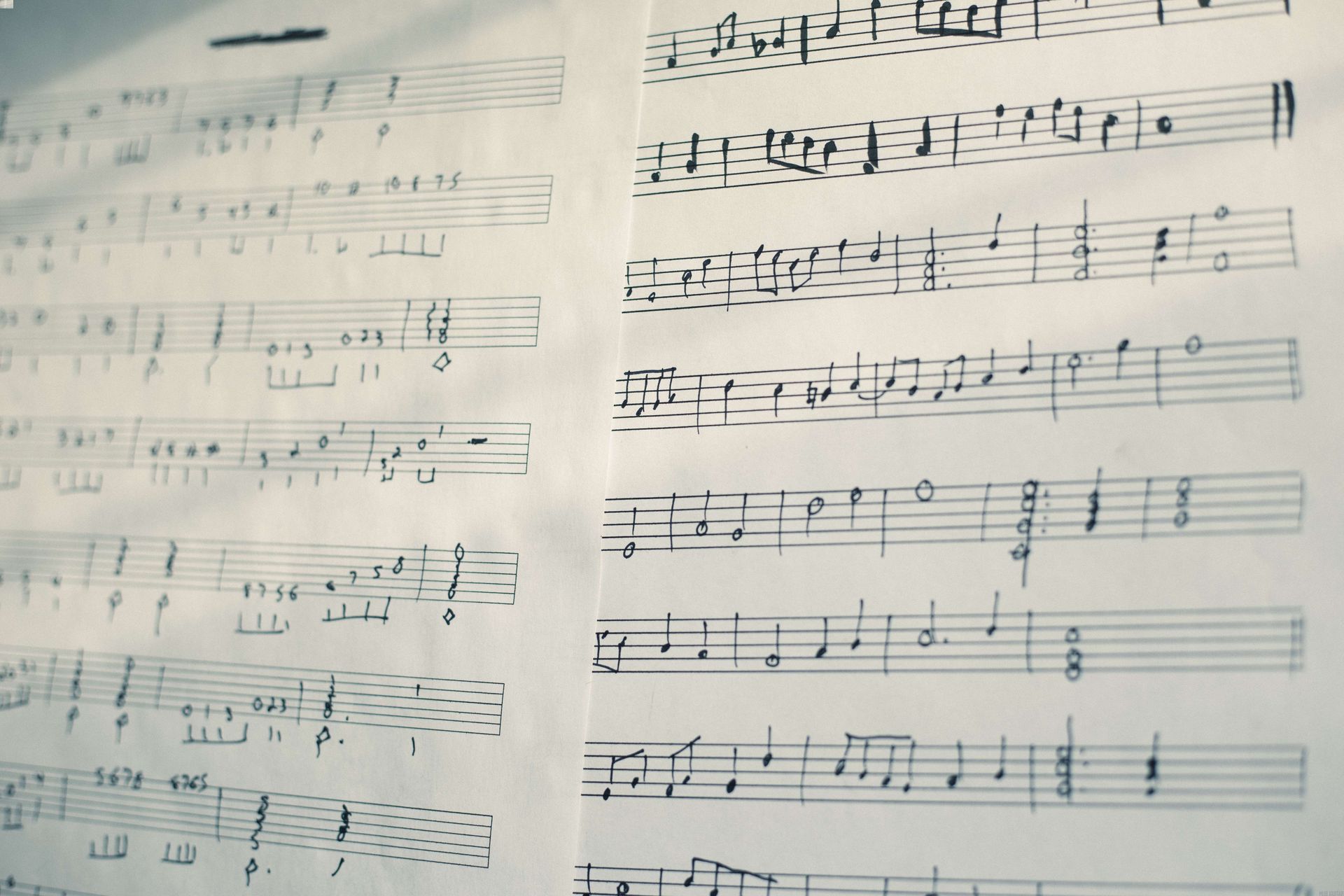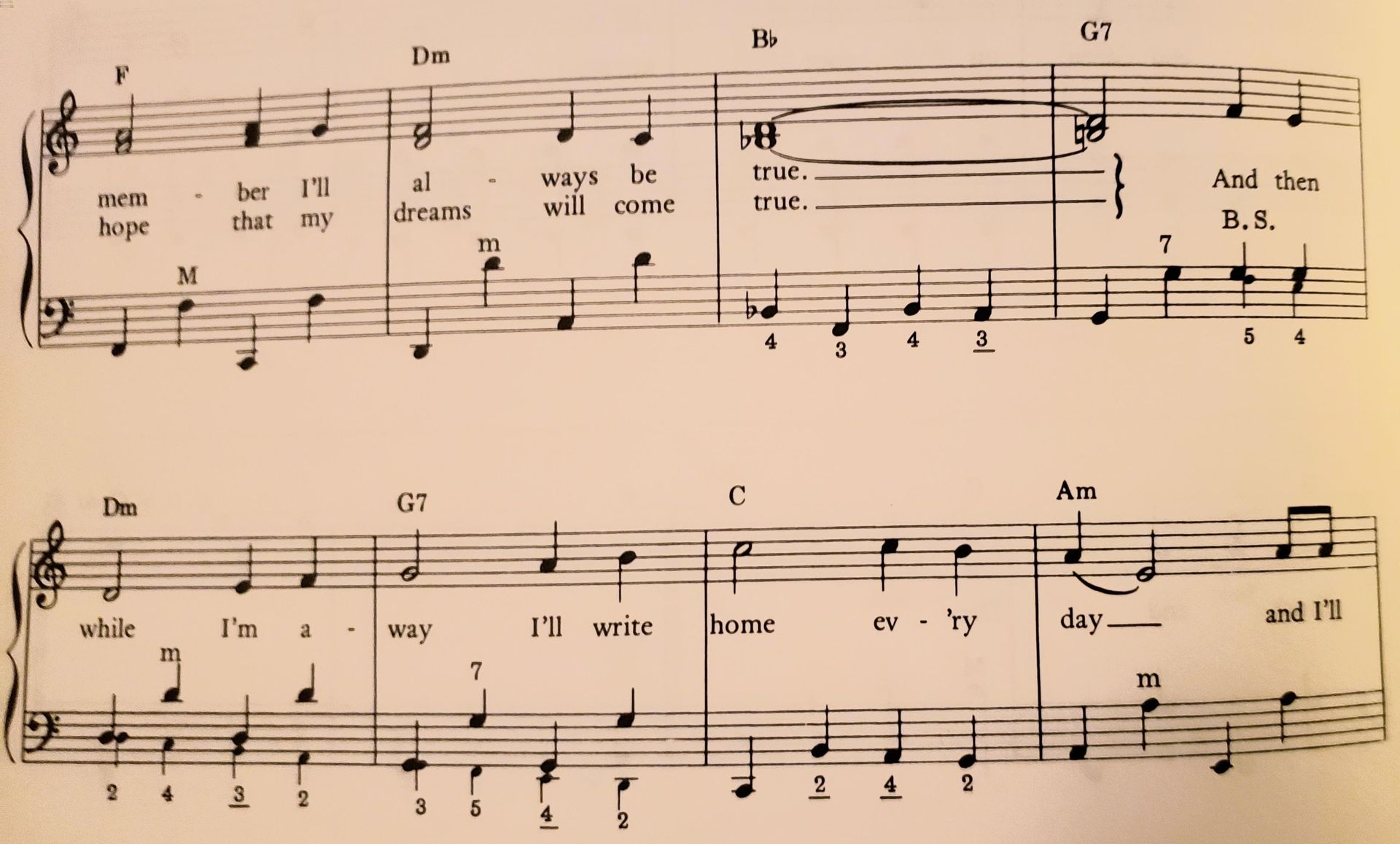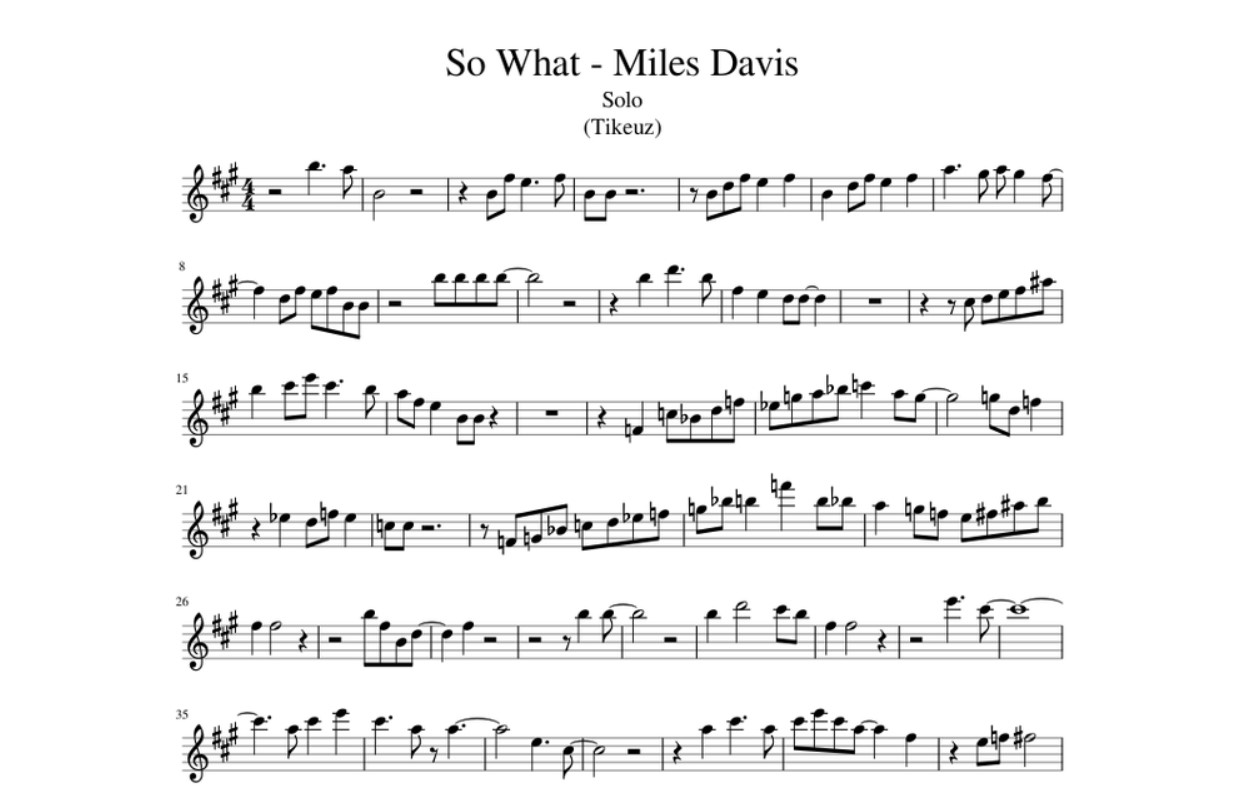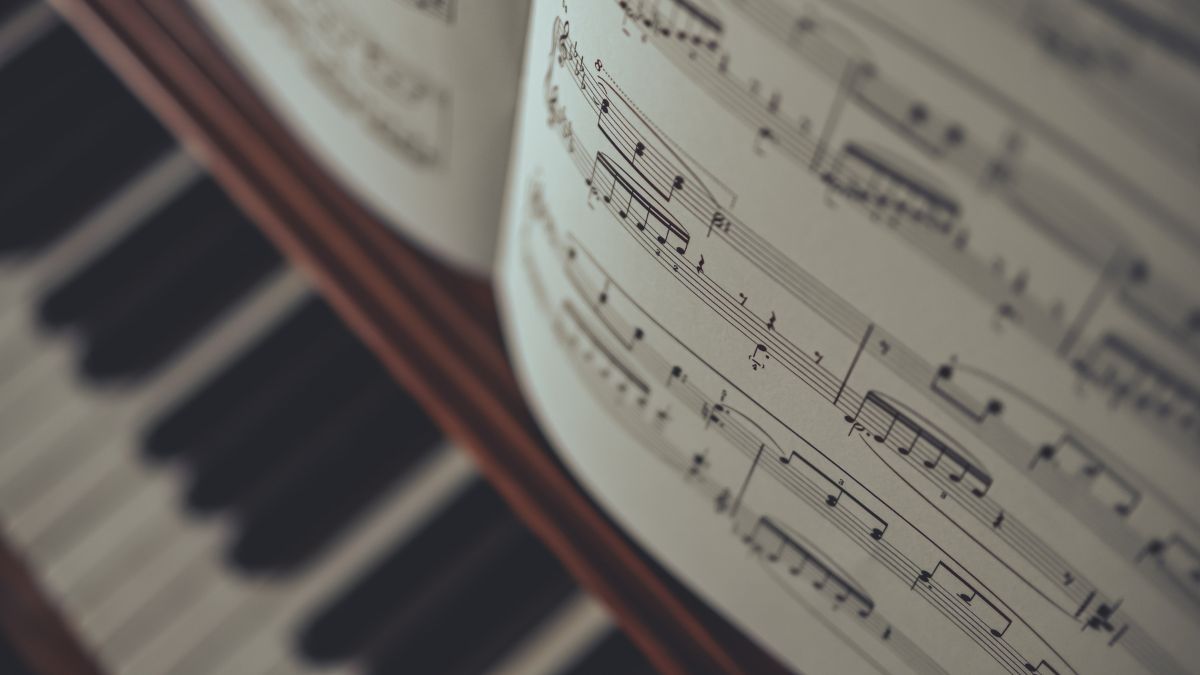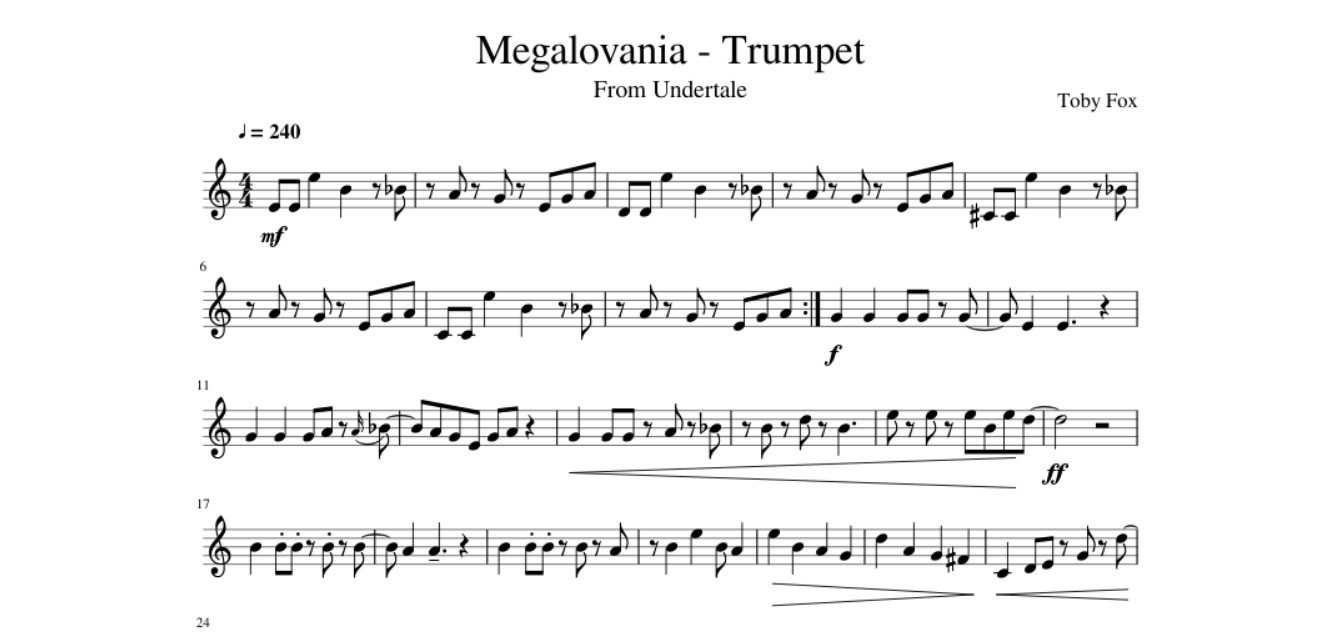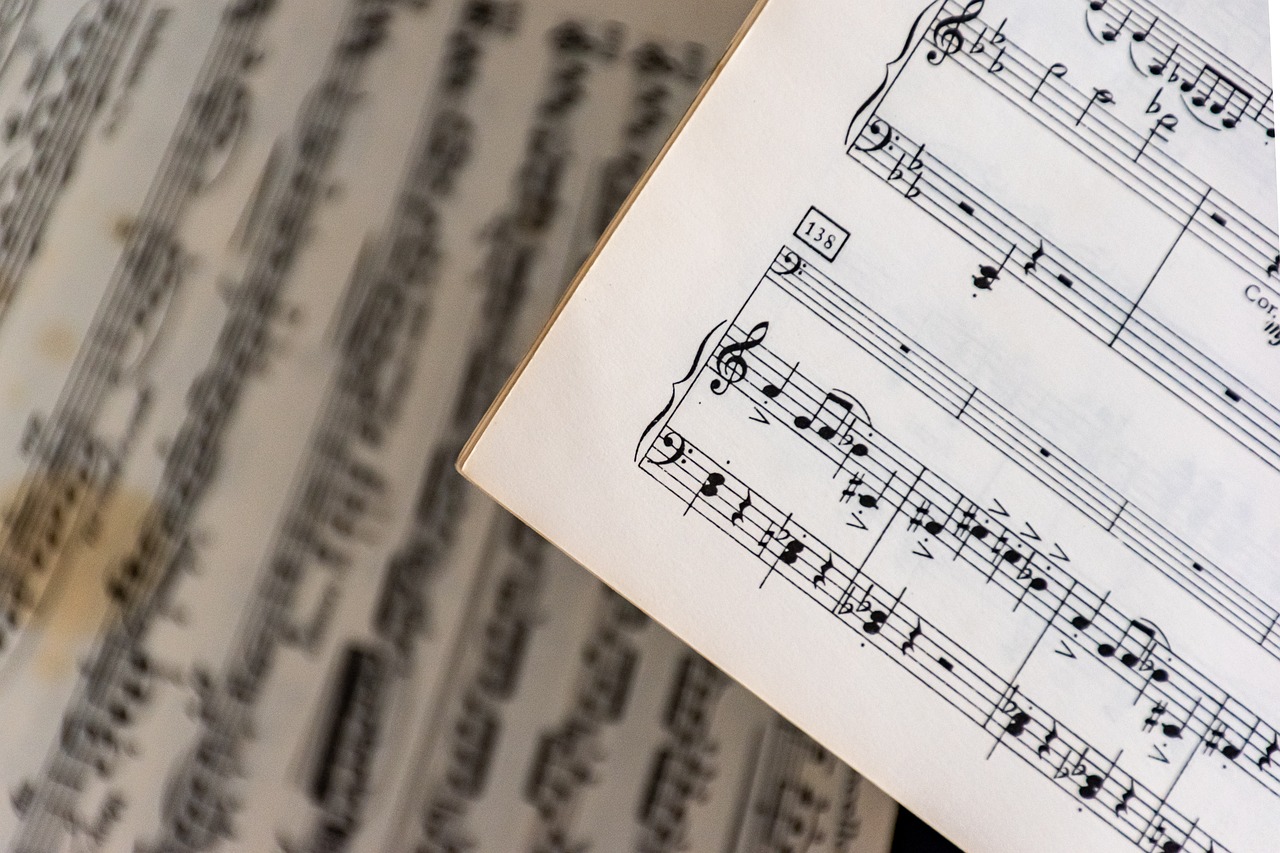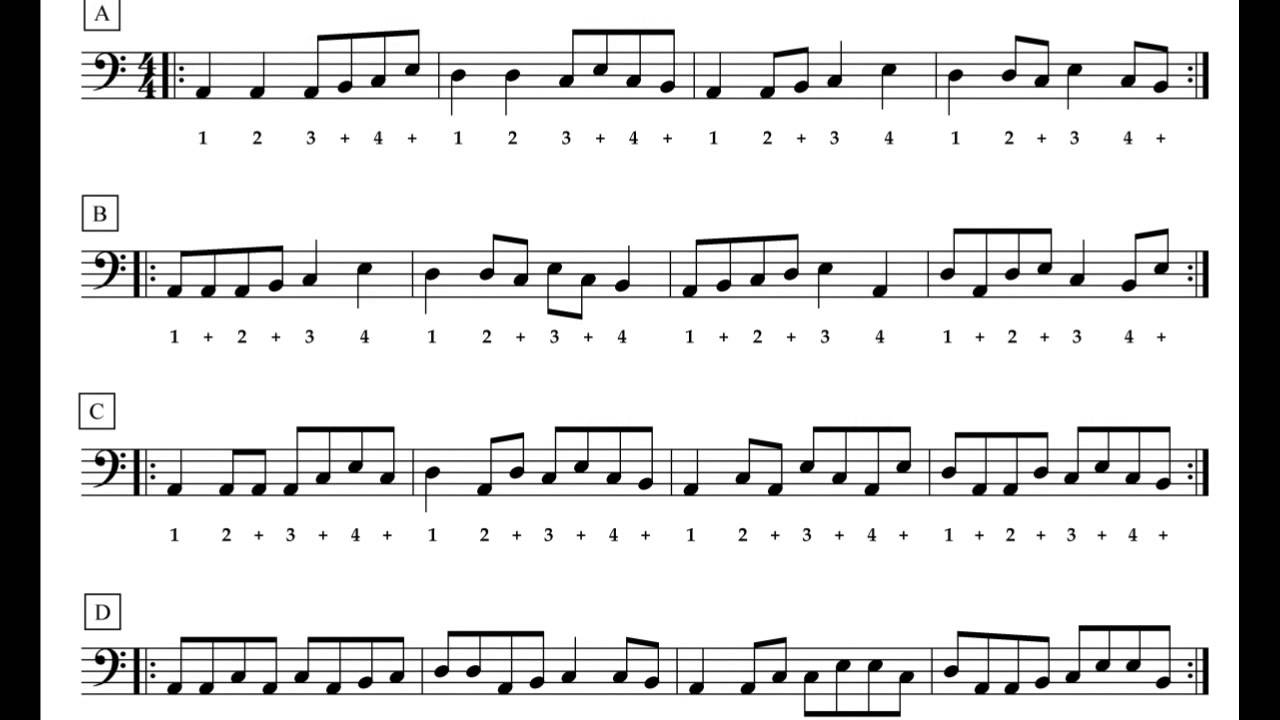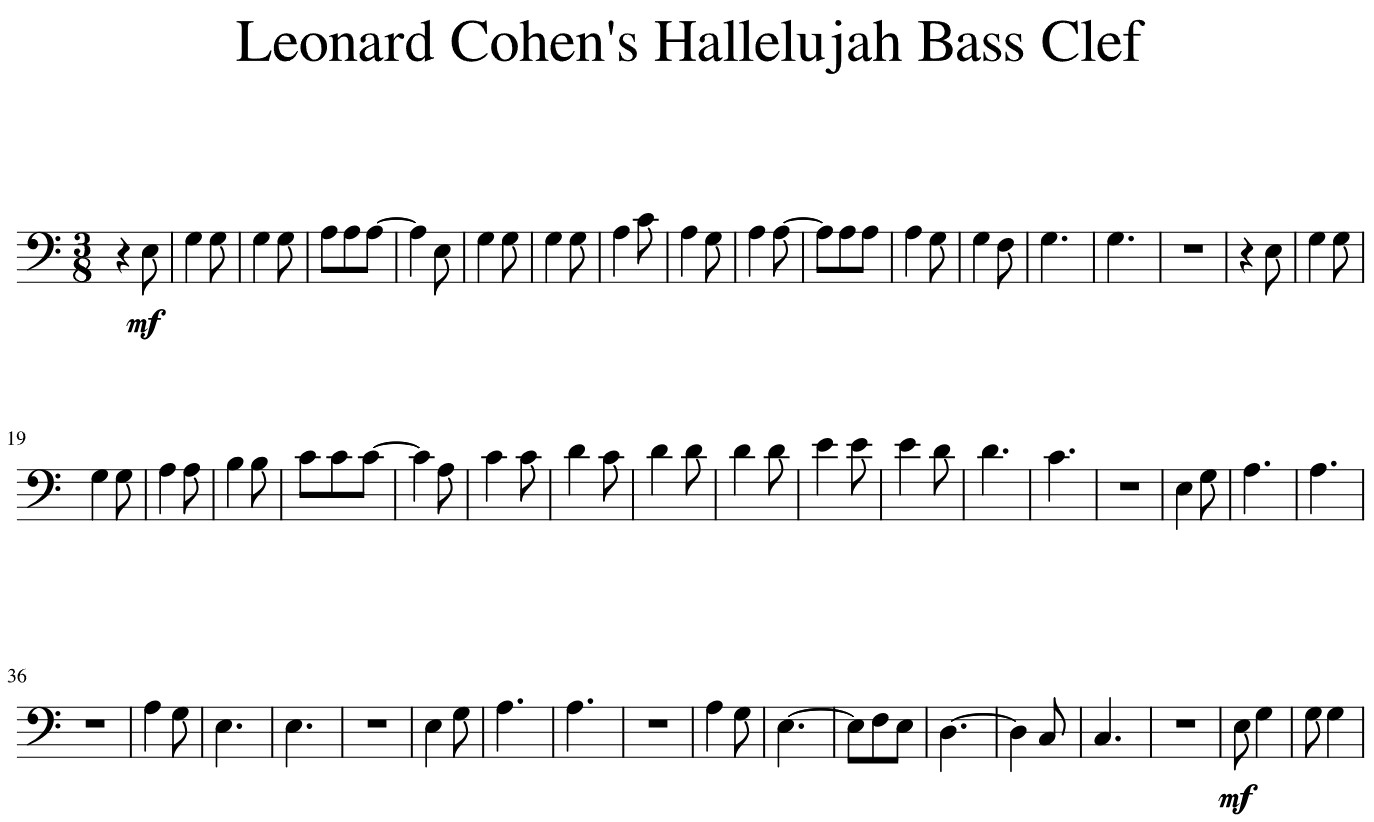Home>Production & Technology>Sheet Music>How To Read Alto Saxophone Sheet Music
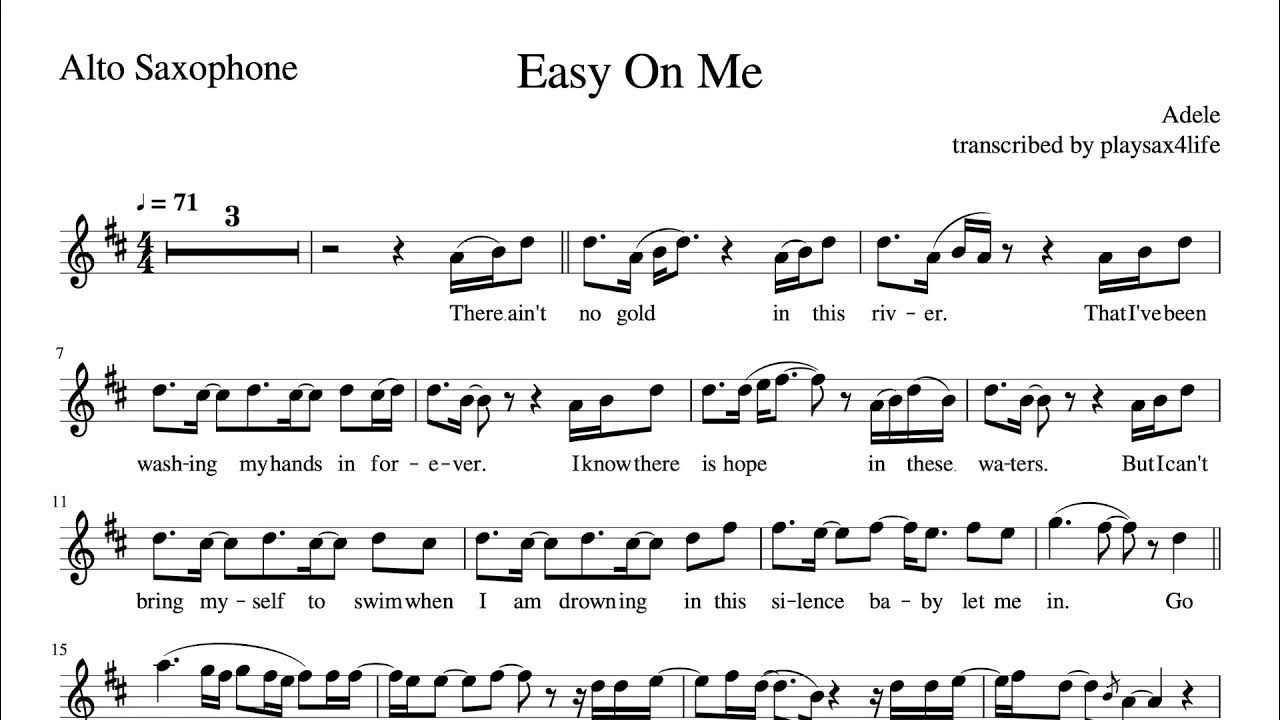

Sheet Music
How To Read Alto Saxophone Sheet Music
Published: December 1, 2023
Learn how to read alto saxophone sheet music with our comprehensive guide. Master the art of reading and interpreting sheet music to play your favorite tunes on the alto saxophone.
(Many of the links in this article redirect to a specific reviewed product. Your purchase of these products through affiliate links helps to generate commission for AudioLover.com, at no extra cost. Learn more)
Table of Contents
Introduction
Welcome to the world of sheet music and the art of reading and interpreting it! Sheet music is a universal language that allows musicians to bring musical compositions to life. Whether you’re a beginner or an experienced musician, understanding how to read sheet music is essential for honing your skills and expanding your musical repertoire.
In this article, we will guide you through the basics of reading sheet music for the alto saxophone. The alto saxophone is a versatile and charismatic instrument, known for its rich tone and expressive capabilities. By learning how to read alto saxophone sheet music, you’ll be able to play a wide range of musical genres, from classical and jazz to pop and rock.
Before we dive into the intricacies of sheet music, it’s important to familiarize yourself with the staff, which is the foundation of written music. The staff consists of five horizontal lines and four spaces, and it serves as a visual representation of the musical pitches.
Next, we’ll explore how to learn the notes on the alto saxophone. Each note corresponds to a specific position on the staff, and understanding the placement of notes is crucial for playing the correct pitch.
Key signatures are another essential component of sheet music. We will delve into how to recognize and interpret key signatures, which indicate the tonality of a piece and the alterations of certain notes throughout the music.
Furthermore, time signatures play a significant role in determining the rhythm and tempo of a piece. We’ll discuss how to master time signatures, enabling you to play in sync with other musicians and maintain the desired musical groove.
Note values are fundamental to understanding the duration of each note in a piece. By familiarizing yourself with different note values, you’ll be able to accurately interpret the timing and rhythm of a composition.
Articulation marks, such as slurs, staccatos, and legatos, provide guidance on how to play each note. We’ll explore the various articulation marks and their effects on the overall musical expression.
In addition, dynamics refer to the changes in volume and intensity throughout a piece. We’ll discuss how to interpret dynamic markings and convey the appropriate emotions through your saxophone playing.
Lastly, we’ll cover special symbols that may appear in sheet music, which provide instructions for technique, expression, or specific musical effects. Understanding these symbols will enhance your ability to bring out the nuances and character of a piece.
By the end of this article, you’ll have a solid understanding of how to read alto saxophone sheet music and be well-equipped to embark on your musical journey. So, let’s get started and unlock the world of sheet music for the alto saxophone!
Understanding the Staff
The staff is the foundation of written music and serves as a visual representation of the musical pitches. It consists of five horizontal lines and four spaces, collectively known as ledger lines, upon which the notes are placed.
Each line and space on the staff represents a different musical pitch. The bottom line of the staff is assigned to the note E, followed by G, B, D, and F for the lines, and the spaces correspond to the notes F, A, C, and E, starting from the bottom space.
To help musicians identify the pitch of a note easily, ledger lines are sometimes added above or below the staff to extend its range. These lines extend the staff for notes that are higher or lower than the standard staff.
In addition, a clef symbol is placed at the beginning of the staff to indicate the range and position of the notes on the staff. For alto saxophone, the treble clef is commonly used. The treble clef looks like a stylized “G” and tells us that the second line from the bottom of the staff represents the note G.
When reading sheet music for the alto saxophone, it’s important to keep track of which note corresponds to each line or space. This can be achieved through practice and repetition, gradually developing your ability to instantly recognize the positions of the notes on the staff.
One helpful mnemonic device, called “Every Good Boy Deserves Fudge,” can aid in remembering the names of the notes on the lines of the staff. Another mnemonic for the notes in the spaces is “FACE.”
Understanding the staff is crucial for reading and playing sheet music accurately. By familiarizing yourself with the lines, spaces, and the corresponding notes on the staff, you’ll gain a solid foundation to navigate through sheet music and interpret musical compositions effectively.
Learning the Notes
Learning the notes on the alto saxophone is essential for playing the correct pitches when reading sheet music. Each note on the staff corresponds to a specific position and fingering on the instrument.
Starting with the lower notes, the alto saxophone’s range spans from a low Bb (B-flat) to a high F#. These notes can be represented on the staff using ledger lines above or below the lines and spaces of the staff.
When reading sheet music for the alto saxophone, it’s crucial to be familiar with the fingerings for each note. By practicing and memorizing the fingerings, you’ll be able to play the correct pitch indicated by the written note on the staff.
Here are the fingerings for the basic notes on the alto saxophone:
- Bb: Use the left hand index, middle, and ring fingers for the keys on the upper part of the saxophone, along with the right hand index and middle fingers for the keys on the lower part.
- C: Same fingering as Bb, but add the left-hand pinky for the key on the back of the instrument.
- D: Add the left-hand pinky for the key located above the index finger keys.
- E: Add the left-hand ring finger for the key located between the index finger and middle finger keys.
- F: Add the left-hand pinky for the key located above the middle finger keys.
- G: Add the left-hand index finger for the key located below the index finger keys.
- A: Add the left-hand index finger for the key located below the middle finger keys.
- B: Add the left-hand index finger for the key located below the pinky keys.
- C (high): Add the left-hand index finger for the key located below the left-hand thumb rest.
Learning the fingerings for these basic notes will give you a solid foundation to start playing melodies and reading sheet music on the alto saxophone. As you progress, you can explore more advanced fingerings for additional notes and techniques.
Practice regularly to develop muscle memory and familiarity with the fingerings. This will ultimately increase your fluency and accuracy when reading and playing sheet music on the alto saxophone.
Recognizing Key Signatures
Key signatures are an essential component of sheet music and provide valuable information about the tonality and key of a piece. They help determine the alterations of certain notes throughout the music and guide musicians in playing the correct pitches.
A key signature is typically found at the beginning of a musical staff, right after the clef symbol. It consists of a series of sharps (#) or flats (b) placed on specific lines or spaces of the staff.
The number of sharps or flats in a key signature indicates the key of the piece. For example, a key signature with no sharps or flats indicates the key of C major or A minor, which have no alterations to the natural notes.
To identify the key of a piece based on the key signature, you can use a mnemonic device. For key signatures with sharps, the mnemonic “Fat Cats Go Down Alleys Eating Birds” can help you remember the order of sharps (F, C, G, D, A, E, B). For key signatures with flats, use the mnemonic “Battle Ends And Down Goes Charles’ Father” (B, E, A, D, G, C, F).
Once you have identified the key signature, you will know which notes are altered throughout the piece. For example, if the key signature has one sharp (F#), every F in the music is automatically played as an F#, unless there is a natural sign in front of the note to cancel the sharp.
Recognizing key signatures is crucial for reading and interpreting sheet music accurately. It allows you to anticipate the altered notes and play the correct pitches, contributing to the overall harmony and tonality of the music.
When practicing, it’s beneficial to play scales and exercises in different key signatures to familiarize yourself with the positions and fingerings associated with each altered note. This will increase your fluency and ease in playing music in various keys.
Remember, key signatures serve as a roadmap, guiding you through the tonal landscape of a piece. By developing your ability to recognize and interpret key signatures, you’ll gain a deeper understanding of music theory and become a more versatile musician on the alto saxophone.
Mastering Time Signatures
Time signatures play a vital role in sheet music, indicating the rhythm and timing of a piece. They consist of two numbers stacked on top of each other, written at the beginning of a piece or whenever there is a change in the rhythmic pattern.
The top number of the time signature represents the number of beats in each measure, while the bottom number indicates the value of each beat. For example, in a time signature of 4/4, there are four beats in each measure, and the quarter note receives one beat.
Common time signatures include 4/4, 3/4, and 2/4. In 4/4 time, which is also known as “common time,” there are four beats in each measure, and the quarter note receives one beat. This is the most frequently used time signature in popular music.
In 3/4 time, there are three beats in each measure, and the quarter note still receives one beat. This time signature is commonly found in waltzes and classical music.
In 2/4 time, there are two beats in each measure, and the quarter note receives one beat. This time signature is often associated with marches and certain styles of folk music.
Mastering time signatures is crucial for staying in sync with other musicians and maintaining the desired musical tempo. It helps create a sense of rhythm and groove, allowing the music to flow naturally.
When reading sheet music that contains time signature changes, pay attention to any adjustments in the number of beats per measure and the value of each beat. These changes can significantly affect the overall feel and flow of a piece.
To practice mastering time signatures, try counting and clapping along to different rhythms. Start by tapping your foot or using a metronome to establish a steady beat, and then clap on each beat according to the time signature. This exercise will improve your internal sense of time and help you become more comfortable with different rhythmic patterns.
As you encounter varying time signatures in sheet music for the alto saxophone, keep practicing and familiarizing yourself with their respective rhythms. With time and practice, you’ll become adept at reading and playing music in different time signatures, enhancing your musicality on the alto saxophone.
Navigating Note Values
Note values are essential elements of sheet music that indicate the duration or length of each note. By understanding note values, you’ll be able to accurately interpret the rhythm and timing of a musical piece when playing the alto saxophone.
In sheet music, note values are represented by different shaped symbols placed on the staff. The most commonly used note values include the whole note, half note, quarter note, eighth note, and sixteenth note.
The whole note is an open circle and has the longest duration, typically lasting for four beats in 4/4 time. The half note is a notehead with a stem and is held for two beats. The quarter note is similar to the half note but does not have a filled-in notehead, and it lasts for one beat.
Eighth notes are represented by a filled-in notehead with a flag or beam attached to the stem. They last for half a beat each. When two eighth notes are tied together with a beam, they are played as one note lasting for one beat.
Sixteenth notes have two flags or beams attached to the stem and last for a quarter of a beat each. Just like eighth notes, two sixteenth notes tied together with a beam are played as one note lasting for half a beat.
In addition to these basic note values, there are also dotted notes and rests. A dot placed next to a note increases its duration by half. For example, a dotted half note lasts for three beats, and a dotted quarter note lasts for one-and-a-half beats.
Note rests, represented by symbols like the whole rest, half rest, quarter rest, etc., indicate periods of silence or rest in the music. It’s important to observe rests in sheet music to maintain the correct rhythm and pacing of a piece.
When reading sheet music for the alto saxophone, pay close attention to the note values and rests indicated by the symbols. Counting and subdividing the beats in your mind can help you accurately play the notes and maintain the desired rhythm.
Practicing scales and exercises that incorporate different note values is a great way to improve your sense of rhythm and accuracy. Start by playing simple rhythms and gradually increase the complexity as you become more comfortable with different note values.
By navigating note values effectively, you’ll be able to bring life and expression to your alto saxophone playing, ensuring that you stay in sync with other musicians and create a compelling musical performance.
Understanding Articulation Marks
Articulation marks are symbols used in sheet music to guide musicians on how to play each note with regards to its duration, attack, and release. They provide important instructions for bringing out the desired musical expression and phrasing on the alto saxophone.
There are various types of articulation marks used in sheet music, each conveying a different style of playing and sound:
- Staccato: A dot placed above or below a note indicates that it should be played in a short and detached manner, with a slight separation between notes.
- Legato: A curved line connecting two or more notes indicates that they should be played smoothly and connected, without any breaks in sound.
- Slur: A curved line placed above or below a group of notes indicates that they should be played legato, with a smooth and connected execution.
- Tenuto: A horizontal line placed above or below a note indicates that it should be played with a slight emphasis or sustained for its full value.
- Accent: A forward-facing arrow placed above or below a note indicates that it should be played with added emphasis or force, creating a stronger attack.
- Marcato: A vertical line placed above or below a note indicates that it should be played with a marked and emphasized attack. It is similar to an accent but with a wider emphasis on the note’s duration.
- Staccatissimo: A dot placed above or below a vertical line or wedge-shaped symbol indicates that the note should be played very short and with a strong detachment from the following note.
Understanding these articulation marks is crucial for accurately interpreting the intentions of the composer and conveying the desired musical expression. They add depth and nuance to your playing, allowing you to shape the phrases and convey emotions effectively.
When practicing sheet music that includes articulation marks, it’s important to pay close attention to these symbols. Experiment with different articulation techniques, such as playing with a crisp staccato or a smooth legato, to understand the impact each mark has on the overall musical performance.
By mastering the interpretation of articulation marks, you’ll be able to add musicality and expressiveness to your alto saxophone playing, bringing sheet music to life in a way that reflects your unique interpretation and style.
Interpreting Dynamics
Dynamics in sheet music refer to the variations in volume and intensity of a musical piece. They provide important cues for musicians to effectively convey the emotions and expressive qualities of the music being played on the alto saxophone.
Dynamic markings are indicated by specific symbols and terms, guiding the musician on how loud or soft to play. Here are some common dynamic markings:
- pp: Pianissimo – very soft
- p: Piano – soft
- mp: Mezzo-piano – moderately soft
- mf: Mezzo-forte – moderately loud
- f: Forte – loud
- ff: Fortissimo – very loud
- crescendo: Gradually increase in volume
- decrescendo or diminuendo: Gradually decrease in volume
By adhering to the dynamic markings, you can effectively shape the phrases, create contrast, and bring out the intended musical expression. For example, playing a section marked “pp” with delicacy and subtlety can evoke a sense of intimacy, while a section marked “ff” demands powerful and commanding playing.
In addition to the intended volume, dynamics also help convey the emotional content of the music. For instance, playing a passage with a gradual crescendo may build tension and excitement, while a sudden decrescendo can create a moment of surprise or reflection.
Interpreting dynamics on the alto saxophone requires sensitivity and control over the instrument’s volume. Practice adapting your embouchure and air flow to produce a wide range of dynamics, experimenting with different levels of intensity and volume to bring out the desired musical expression.
Listening to professional recordings or attending live performances can also provide valuable insights into how dynamics are interpreted and expressed on the alto saxophone. Observe the subtle changes in volume and the emotional impact they have on the music, and look for opportunities to incorporate similar techniques into your own playing.
Remember, dynamics are not just about playing louder or softer; they are an essential aspect of musical communication and interpretation. By skillfully interpreting dynamics, you can breathe life into your alto saxophone playing, captivating listeners with your expressive and dynamic performances.
Recognizing Special Symbols
In sheet music, you may come across various special symbols that provide specific instructions or indicate unique musical effects. These symbols are essential for accurately interpreting and performing the music on the alto saxophone.
Here are some common special symbols you may encounter:
- Fermata: A fermata is a symbol placed above a note or rest, indicating that it should be sustained longer than its written value. The length of the pause is at the performer’s discretion and adds a sense of musical freedom and expression.
- Repeat Signs: Repeat signs consist of double barlines with dots indicating the start and end of a repeated section. They allow you to go back and repeat a specific part of the music, following the indicated notation.
- D.C. al Fine and D.S. al Fine: “D.C.” stands for “Da Capo” and means to go back to the beginning of the piece, while “al Fine” indicates that you should play until you reach the word “Fine” (meaning “end” in Italian). Similarly, “D.S.” stands for “Dal Segno” and indicates that you should go back to a specific symbol called a segno (looks like an S), and “al Fine” means to play until the word “Fine.”
- Coda: A coda is a symbol consisting of a circle with a cross inside. It indicates that you should skip to a specific section near the end of the piece, usually marked with the word “Coda.” This allows for a unique musical ending or variation.
- Tremolo: The tremolo symbol consists of three diagonal lines placed above or below a note. It denotes a rapid alternation between that note and another indicated note, creating a trembling or vibrating effect.
- Trill: A trill is indicated by a squiggly line placed above or below a note. It instructs you to rapidly alternate between the indicated note and the note above or below it, adding a decorative and ornamental flourish to the music.
- Pizzicato: Pizzicato is a technique used primarily for string instruments, but it can also be indicated for other instruments like the saxophone. It instructs you to pluck the strings of the instrument rather than using the regular bowing technique, creating a unique and percussive sound.
Recognizing these special symbols and their meanings is crucial for accurately performing the music according to the composer’s intentions. Take the time to familiarize yourself with these symbols and refer to a music theory resource or notation guide if you come across any unfamiliar symbols while reading sheet music.
By understanding and recognizing these special symbols, you’ll be able to navigate through the sheet music effectively, capturing the nuances and unique musical effects indicated by the composer. This will greatly enhance your ability to express yourself and bring out the true essence of the music on the alto saxophone.

